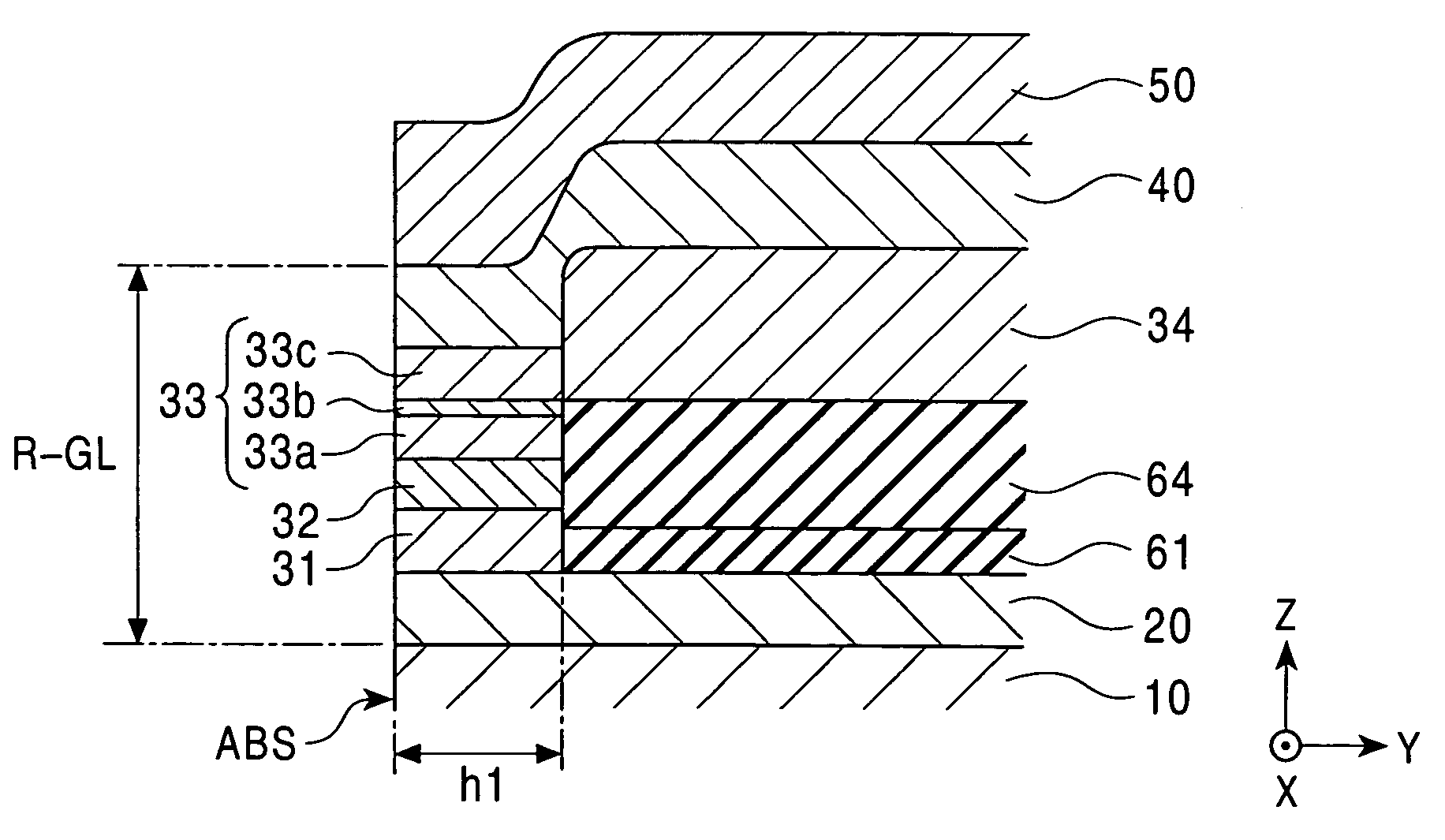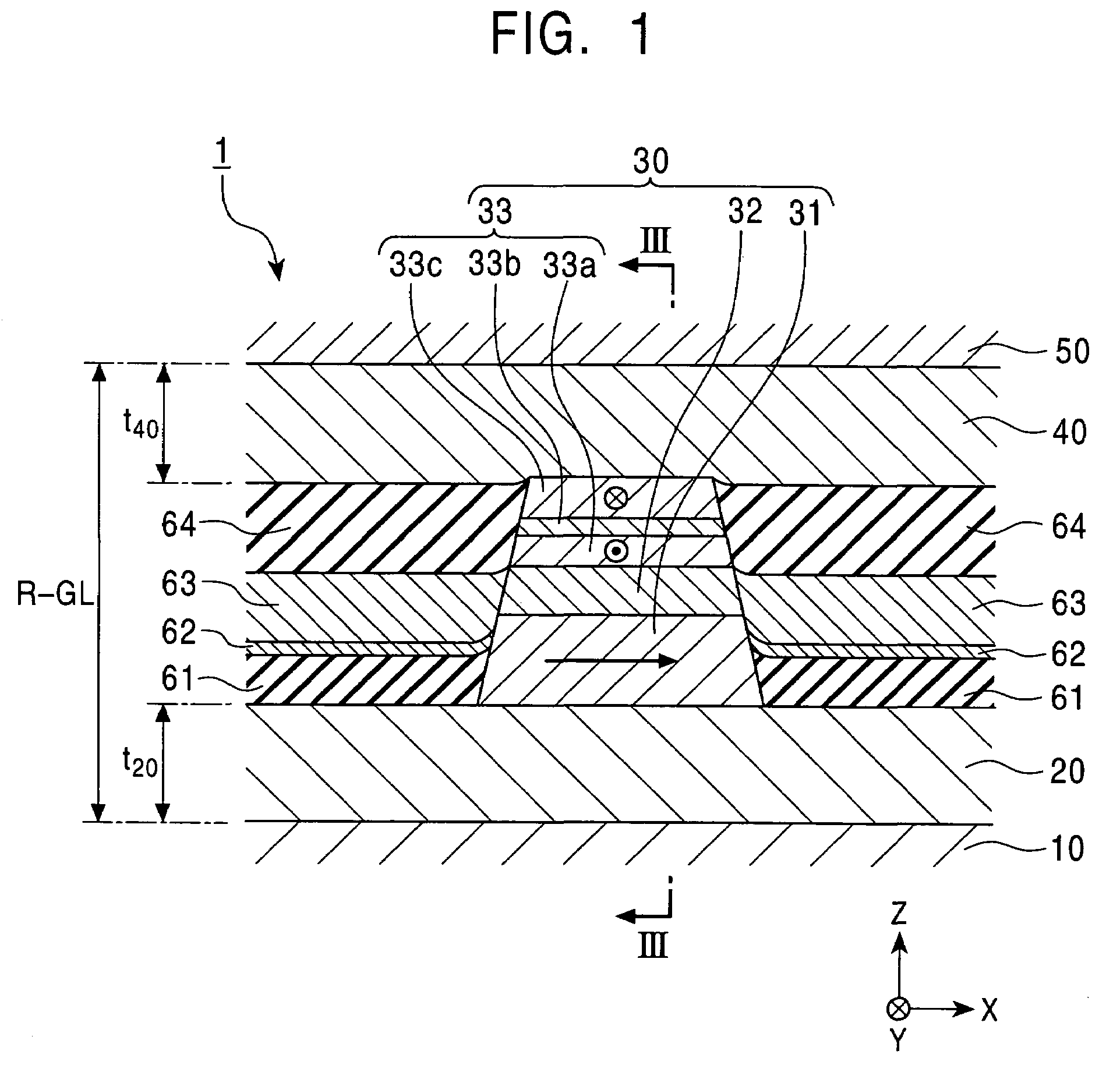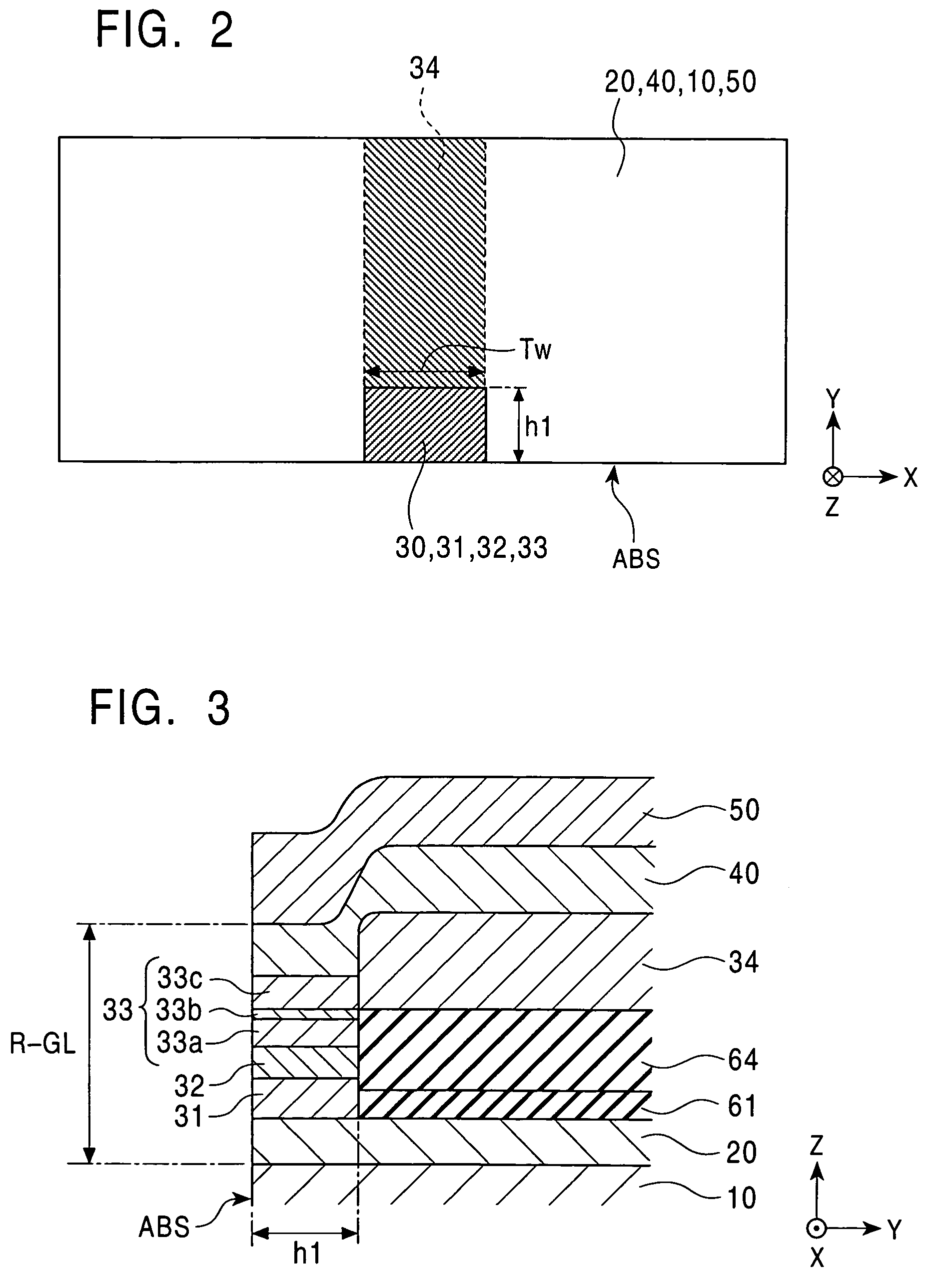CPP giant magnetoresistive head having antiferromagnetic film disposed in rear of element
a technology of antiferromagnetic film and head, which is applied in the field of cpp (current perpendicular to the plane) giant magnetoresistive head, can solve the problems of difficult improvement of a change (ra) in magnetoresistance per unit area, deterioration of reliability and high-frequency characteristics of the head, and difficulty in reducing the joule heat generated by passing the sensing current, etc., to suppress an increase in the element temperature and prevent heat generation
- Summary
- Abstract
- Description
- Claims
- Application Information
AI Technical Summary
Benefits of technology
Problems solved by technology
Method used
Image
Examples
first embodiment
[0118]FIGS. 1 to 5 show a CPP giant magnetoresistive head (CPP-GMR head) according to the present invention. FIG. 1 is a partial sectional view showing the structure of a CPP-GMR head 1, as viewed from a surface facing the recording medium, and FIG. 2 is a schematic top plan view of a GMR element 30, and FIG. 3 is a partial sectional view showing the structure of the CPP-GMR head 1, taken along a central line of the element.
[0119]The CPP-GMR head 1 comprises lower and upper shield layers 10 and 50 with a predetermined shield distance R-GL therebetween in the Z direction shown in the drawing, a lower large-area nonmagnetic metal film 20, the GMR element 30 exhibiting a giant magnetoresistive effect, and an upper large-area nonmagnetic metal film 40, the lower and upper large-area nonmagnetic metal films 20 and 40 and the GMR element 30 being disposed between the lower and upper shield layers 10 and 50.
[0120]Each of the lower and upper shield layers 10 and 50 functions as a magnetic s...
second embodiment
[0152]FIGS. 6 to 13 show a CPP giant magnetoresistive head (CPP-GMR head) according to the present invention.
[0153]The second embodiment is most different from the first embodiment in that the lower and upper large-area nonmagnetic metal films 20 and 40 of the first embodiment are replaced by lower and upper nonmagnetic metal films 220 and 240, respectively, and the antiferromagnetic layer 34 in contact with the rear end surface of the second pinned magnetic layer in the height direction is replaced by an antiferromagnetic layer 234 in contact with the upper surface of a rear portion of a second pinned magnetic layer 231c which extends in the height direction. In the second embodiment, even when the nonmagnetic metal films 220 and 240 are not present in a wide area, the generation of Joule heat can be suppressed because the antiferromagnetic layer 234 is absent from a region where the sensing current flows. Furthermore, a sufficient contact area can be secured between the pinned mag...
third embodiment
[0187]FIGS. 14 to 19 show a CPP giant magnetoresistive head (CPP-GMR heat) according to the present invention.
[0188]The third embodiment is different from the second embodiment in that an antiferromagnetic layer 334 is provided in contact with the lower surface of a first pinned magnetic layer, not the upper surface of a second pinned magnetic layer. The third embodiment is the same as the second embodiment except the arrangement position of the antiferromagnetic layer.
[0189]FIG. 14 is a partial sectional view showing the structure of a CPP-GMR head 301, taken along a central line of an element, FIG. 15 is a partial sectional view showing the structure of the CPP-GMR head 301, as viewed from a surface facing a recording medium, and FIG. 16 is a schematic top plan view of a GMR element 330. In FIGS. 14 to 16, the functions, materials and thicknesses of layers denoted by the same reference numerals as those in the second embodiment shown in FIGS. 6 to 8 are the same as those in the se...
PUM
| Property | Measurement | Unit |
|---|---|---|
| resistivity | aaaaa | aaaaa |
| thickness | aaaaa | aaaaa |
| thickness | aaaaa | aaaaa |
Abstract
Description
Claims
Application Information
 Login to View More
Login to View More - R&D
- Intellectual Property
- Life Sciences
- Materials
- Tech Scout
- Unparalleled Data Quality
- Higher Quality Content
- 60% Fewer Hallucinations
Browse by: Latest US Patents, China's latest patents, Technical Efficacy Thesaurus, Application Domain, Technology Topic, Popular Technical Reports.
© 2025 PatSnap. All rights reserved.Legal|Privacy policy|Modern Slavery Act Transparency Statement|Sitemap|About US| Contact US: help@patsnap.com



